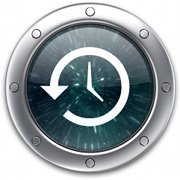Lots of people ask me what I use at home for backups. This post should give me an easy place to send folks from now on. Picture your computer falling from your desk or your child spilling coffee on it. Imagine a virus locking up your entire system. Think of that intern accidentally changing the format on a business document. What if your laptop gets stolen? The dangers inherent in our favorite technological tools are widely known and the reality is that things just break. This is part of the reason online backup programs have become so popular. Combined with the fact that the majority of our most valuable information has become digital, it’s downright irresponsible not to use some sort of data-protection program. Important projects from work, cherished family memories, and critical financial records are all worth taking some extra time to protect. Among the hundreds of online backup sites out there, it can be difficult to pick a winner. Here’s the setup I use for all the macs in my extended family. If you still have a Windows box or two floating around, you can still use the second option.
Day-to-day Protection with Time Machine:  For Mac users, one of the most convenient programs for file protection is Time Machine. Time Machine is a popular choice for onsite backup because it comes standard on all computers running Mac OS X. As a minimal precaution, it works perfectly for day-to-day insurance. Your daily data is backed up every hour, your weekly data is backed up every day, and your monthly data is backed up every week. The only limitation to the program is that you will run out of space, at which point your older backups will be removed. Apple designed the program only to protect users from instant and disastrous data loss; it does not have the appropriate capacity to be used for long-term or remote storage. Files accumulate until you’ve hit your backup drive capacity, and then you’ll have to prioritize your data. A good way to extend your limit is to add an additional drive for Time Machine’s storage, which can add 12-18 months to your unrestricted storage. In general, you want a backup drive twice as large as the data you’re backing up. With Time Machine running, you can rest assured that your progress on any project, professional or personal, will always be at your fingertips and never be lost. But if you are looking for extensive peace of mind against the very worst disasters, you’ll need a backup program more useful for storage.
For Mac users, one of the most convenient programs for file protection is Time Machine. Time Machine is a popular choice for onsite backup because it comes standard on all computers running Mac OS X. As a minimal precaution, it works perfectly for day-to-day insurance. Your daily data is backed up every hour, your weekly data is backed up every day, and your monthly data is backed up every week. The only limitation to the program is that you will run out of space, at which point your older backups will be removed. Apple designed the program only to protect users from instant and disastrous data loss; it does not have the appropriate capacity to be used for long-term or remote storage. Files accumulate until you’ve hit your backup drive capacity, and then you’ll have to prioritize your data. A good way to extend your limit is to add an additional drive for Time Machine’s storage, which can add 12-18 months to your unrestricted storage. In general, you want a backup drive twice as large as the data you’re backing up. With Time Machine running, you can rest assured that your progress on any project, professional or personal, will always be at your fingertips and never be lost. But if you are looking for extensive peace of mind against the very worst disasters, you’ll need a backup program more useful for storage.
Long-term Security with Crashplan:  There are catastrophes that will circumvent even the most meticulous data protection plan. Your information is greatly at risk in the event of natural disasters and other types of hardware destruction Crashplan is a cloud backup program that allows users to save their information anyway they choose from anywhere they choose. Much like Time Machine, its updates are frequent and automatic (default setting is for every 15 minutes), ensuring that all new information and old versions of the same are secured as soon as they’re generated. Perfect for work on the road, Crashplan can backup and retrieve your information from any computer with an internet connection. With no limits on file size and storage, Crashplan is one of the few cloud backup programs that gives users the freedom to avoid choosing which information is most valuable. This ability to be flexible and expansive is what separates it from the pack. Their family plan supports up to ten computers, which makes it perfect for securing all the computers you value most. For users with big data loads, they provide an option to seed the backup process with a drive they mail to you. There is a one-time fee of about $125, but for users like us with terabytes of data, the investment repaid itself in time saved, shaving the week-long process down to a few hours. More importantly, with no limits and total security, you can rest assured that all your information is in safe hands: yours. With these two programs working in tandem, there isn’t a single file in danger of slipping through the cracks of your digital world.
There are catastrophes that will circumvent even the most meticulous data protection plan. Your information is greatly at risk in the event of natural disasters and other types of hardware destruction Crashplan is a cloud backup program that allows users to save their information anyway they choose from anywhere they choose. Much like Time Machine, its updates are frequent and automatic (default setting is for every 15 minutes), ensuring that all new information and old versions of the same are secured as soon as they’re generated. Perfect for work on the road, Crashplan can backup and retrieve your information from any computer with an internet connection. With no limits on file size and storage, Crashplan is one of the few cloud backup programs that gives users the freedom to avoid choosing which information is most valuable. This ability to be flexible and expansive is what separates it from the pack. Their family plan supports up to ten computers, which makes it perfect for securing all the computers you value most. For users with big data loads, they provide an option to seed the backup process with a drive they mail to you. There is a one-time fee of about $125, but for users like us with terabytes of data, the investment repaid itself in time saved, shaving the week-long process down to a few hours. More importantly, with no limits and total security, you can rest assured that all your information is in safe hands: yours. With these two programs working in tandem, there isn’t a single file in danger of slipping through the cracks of your digital world.

